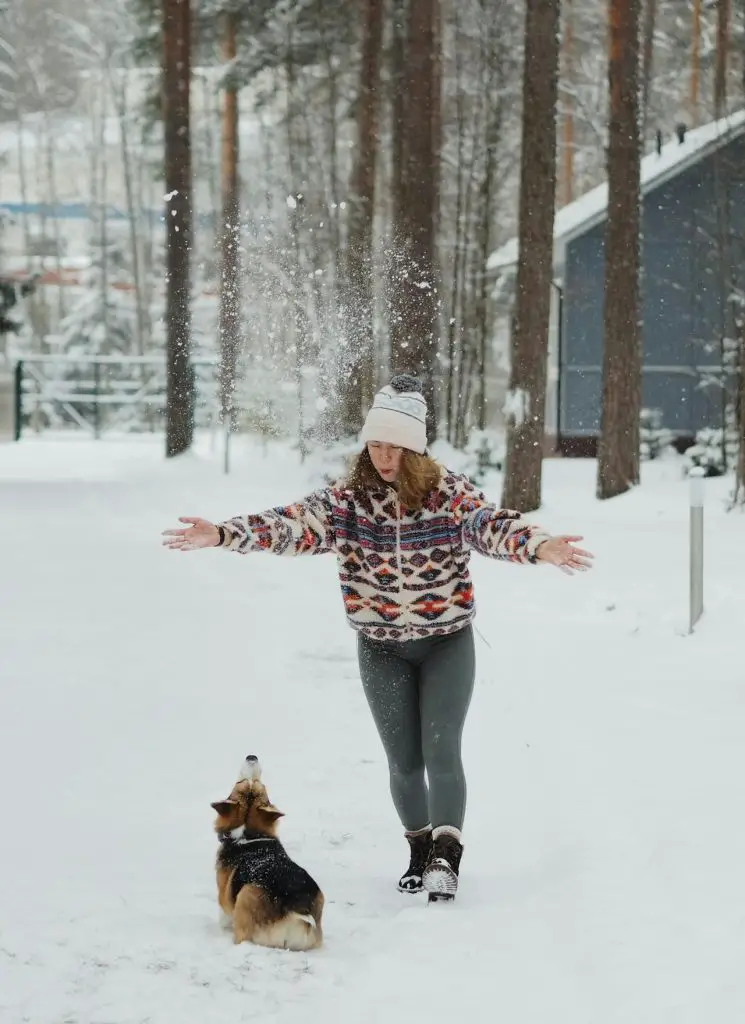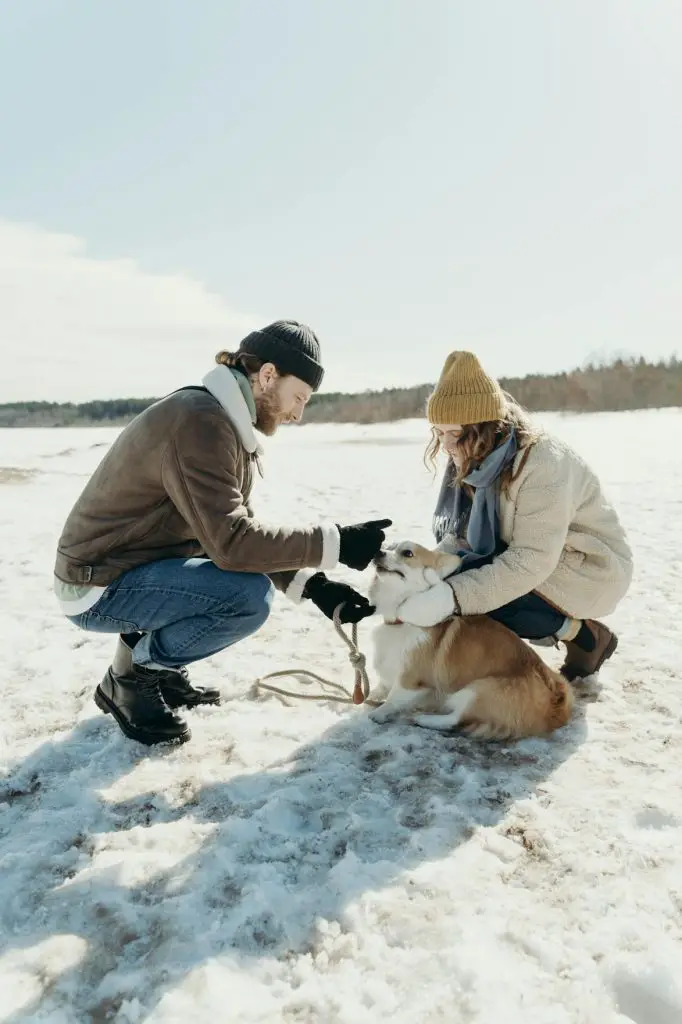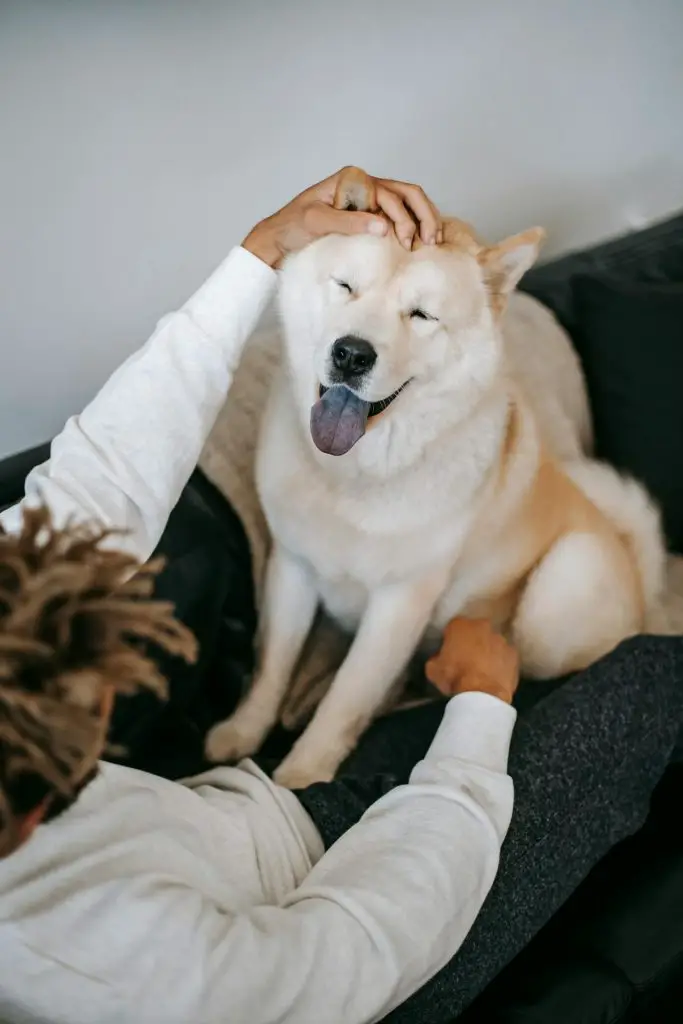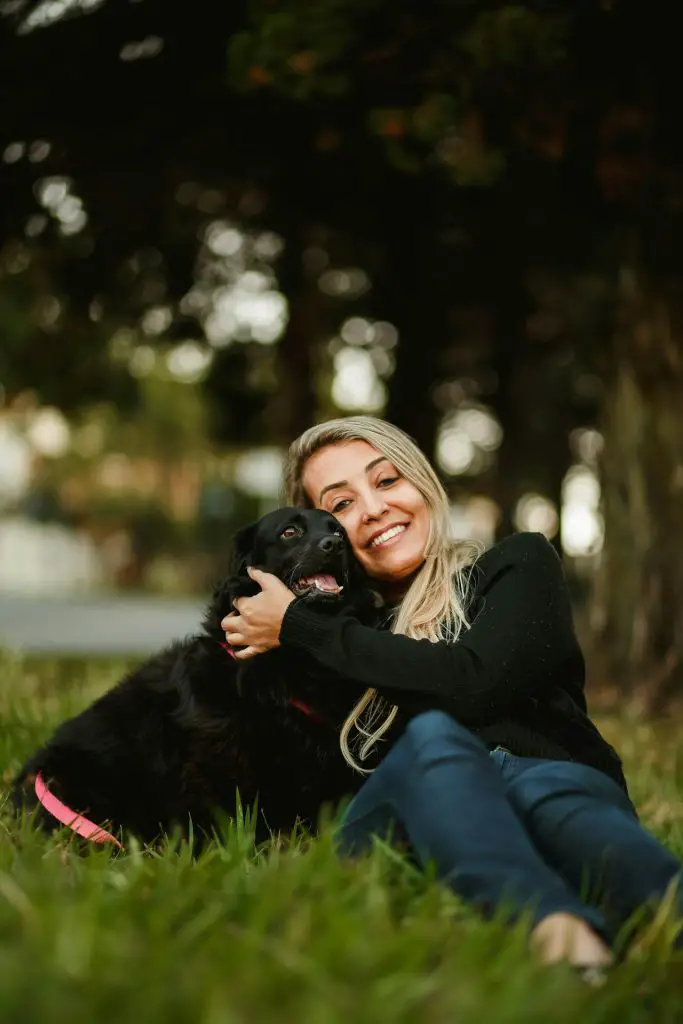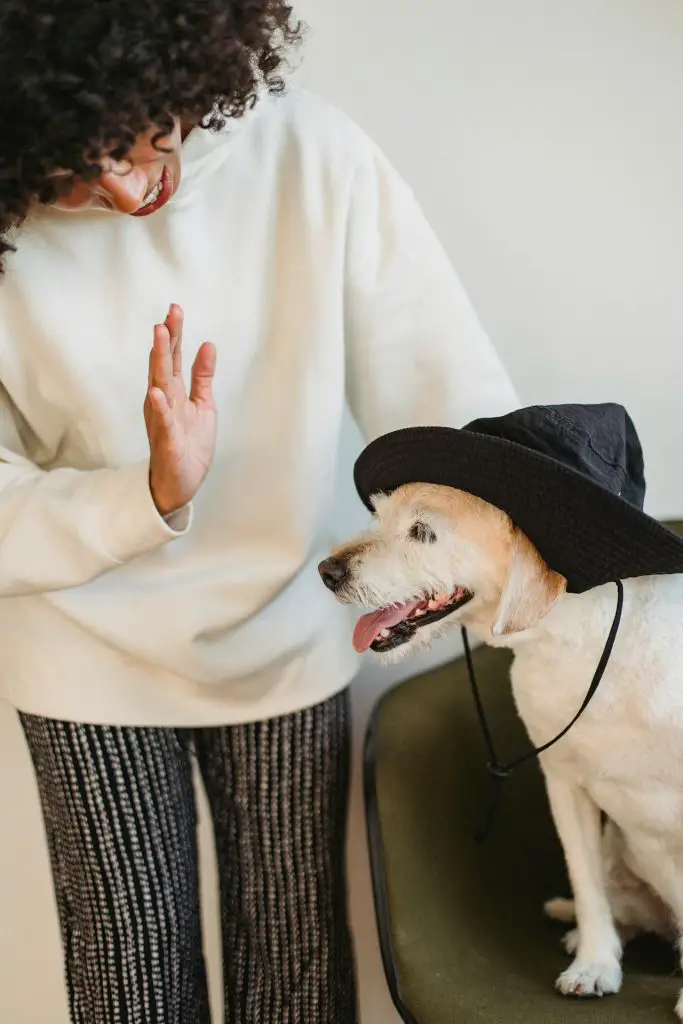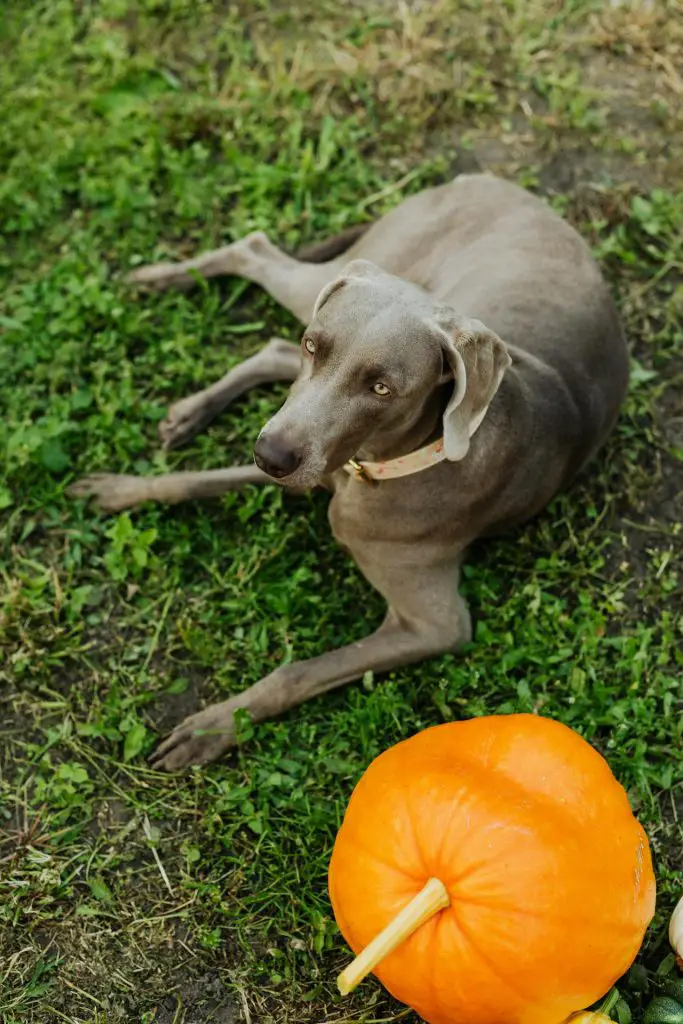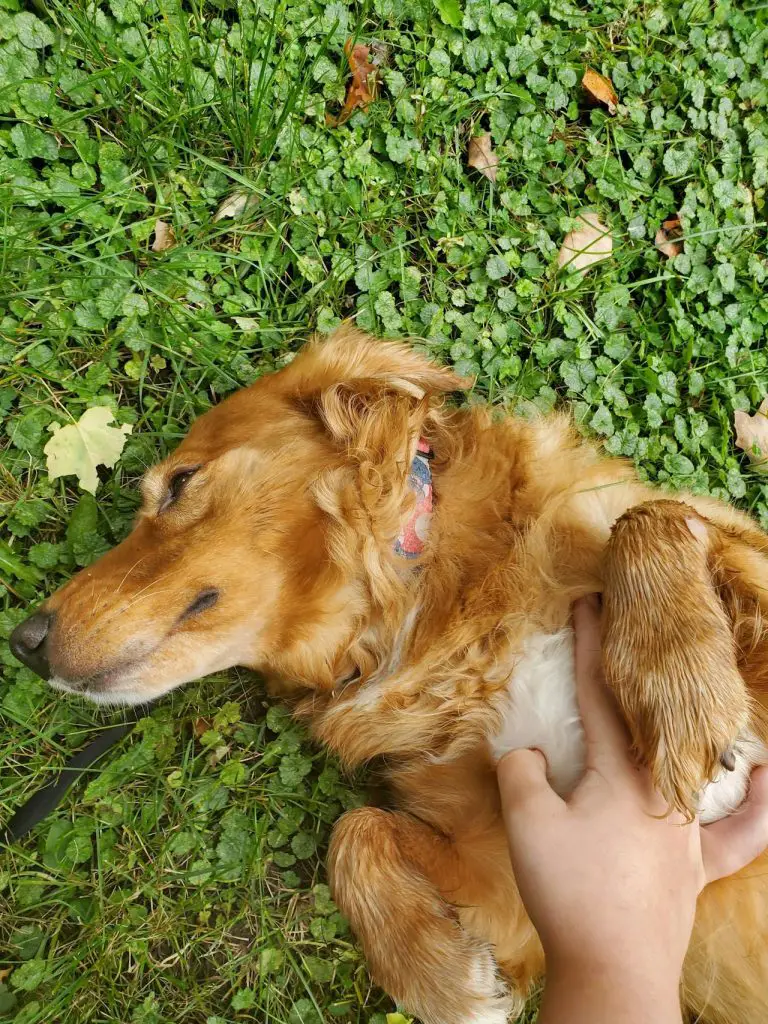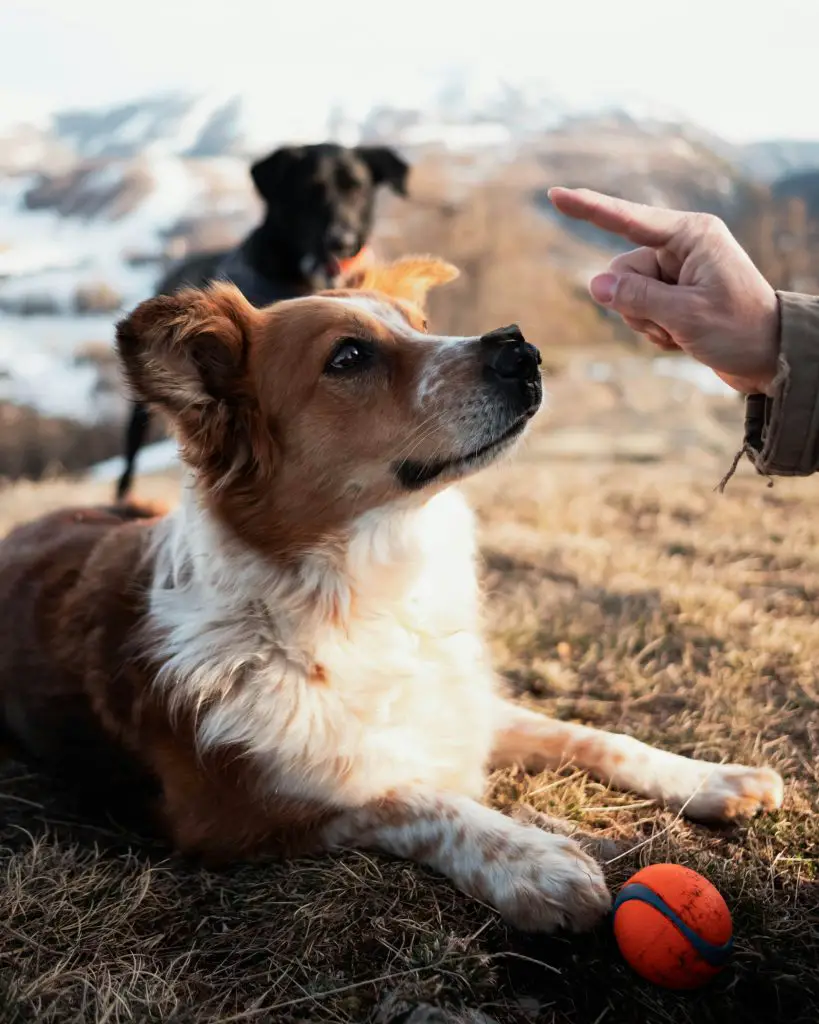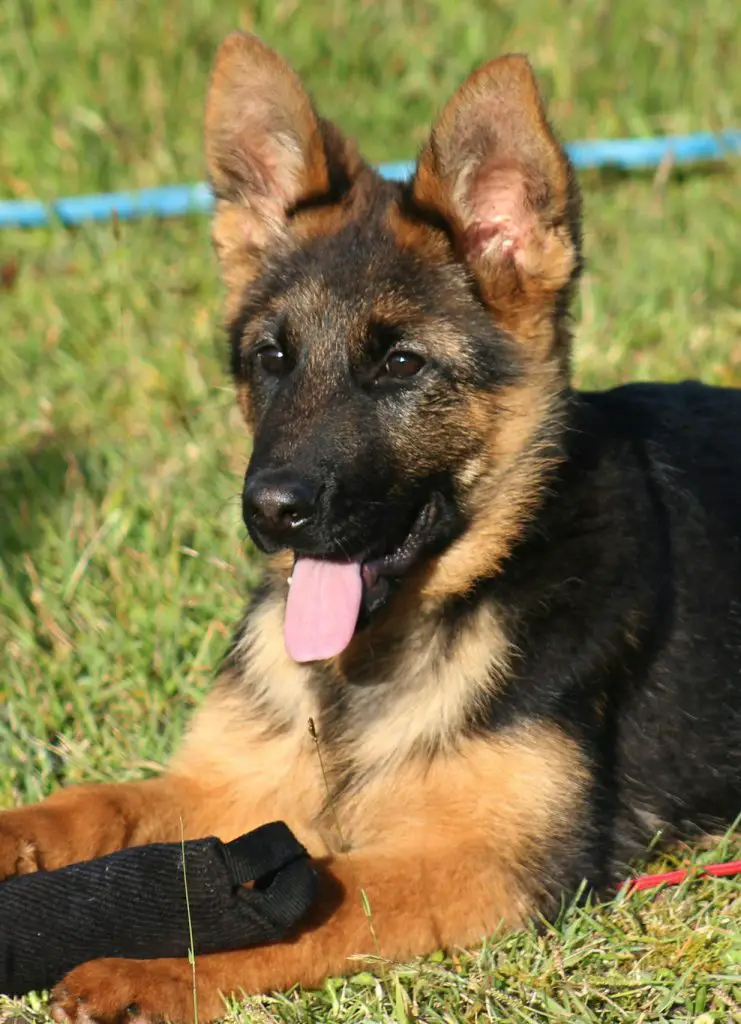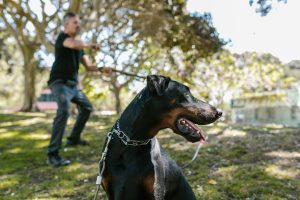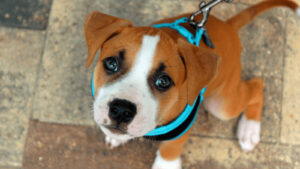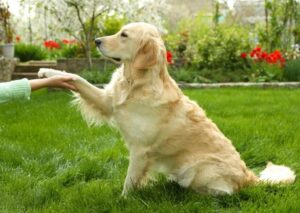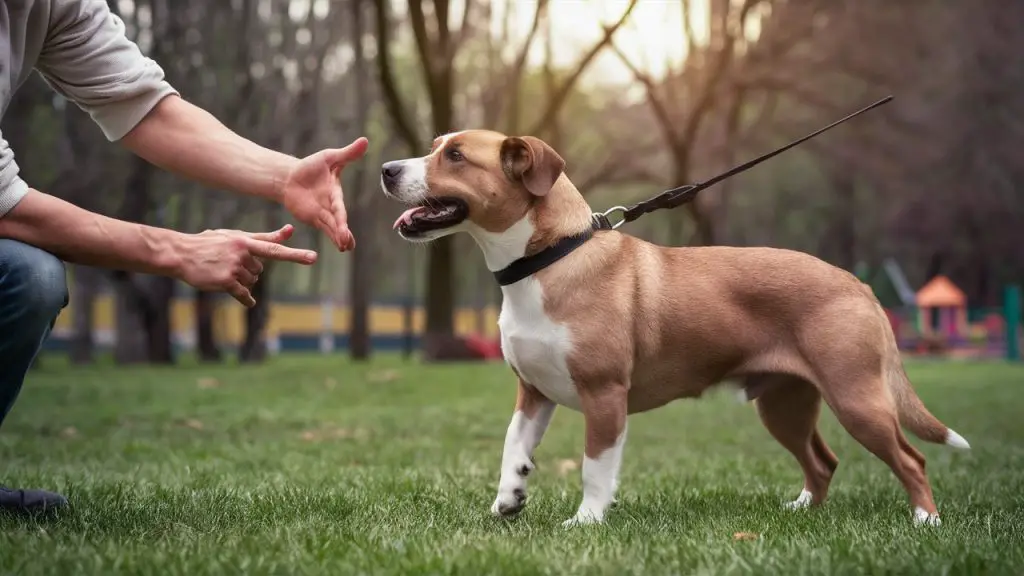
To train a dog to overcome aggression, you need to address the underlying causes of the behavior, not just its symptoms. Start by understanding what triggers your dog’s aggression, whether it’s fear, territorialism, or resource guarding. Then, establish clear communication with your dog through consistent commands and body language. Set boundaries and rules to teach acceptable behavior, and use positive reinforcement techniques to encourage good behavior.
By taking a thorough approach, you can help your dog overcome aggression and develop a more calm and confident demeanor. As you explore this approach further, you’ll discover the specific strategies and techniques that can lead to lasting change. Let us proceed with details on how to how to train a dog to not be aggressive.
Table of Contents
Key Takeaways
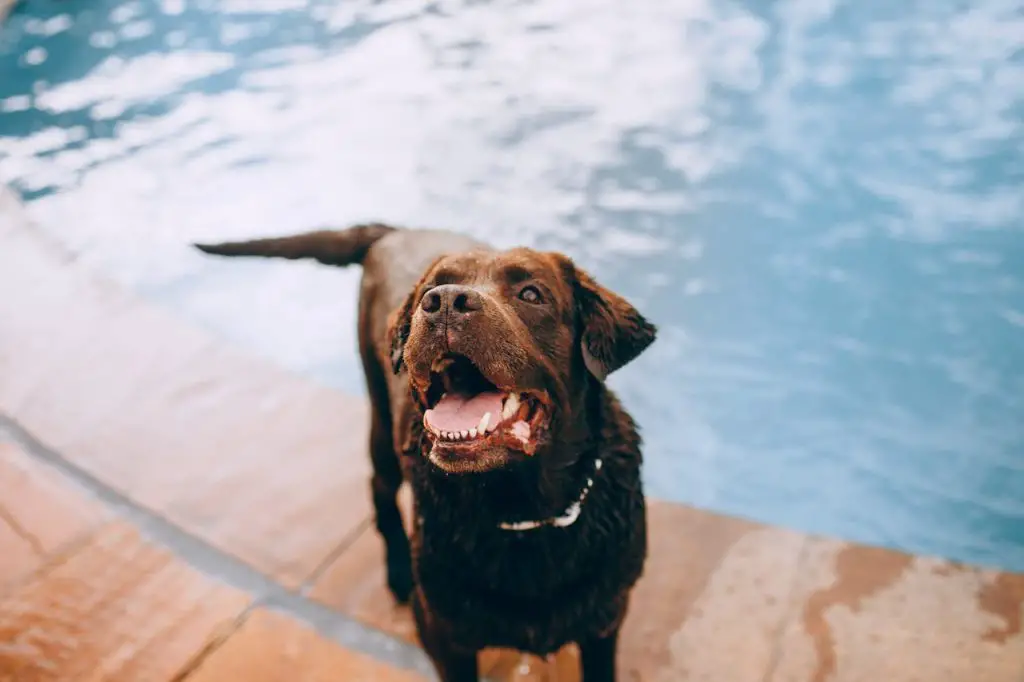
- Identify the underlying causes of aggression, such as fear, territorialism, resource guarding, or medical issues, to develop a targeted training plan.
- Manage environmental factors by controlling exposure to triggers, gradual socialization, and desensitization to loud noises to minimize aggression.
- Establish clear communication with consistent vocabulary, hand signals, and body language to avoid confusion and promote better understanding.
- Set boundaries and rules to teach acceptable behavior, prevent confusion, and create stability in the home environment, consistently enforcing them.
Understand Canine Aggression Causes
Identifying the underlying causes of aggression in your dog is essential to developing an effective training plan, as you can’t address the behavior without understanding its roots.
Canine aggression can stem from various factors, including genetics, environment, and life experiences. You need to recognize that aggression is often a symptom of a deeper issue, not the problem itself.
Fear-based aggression, for instance, occurs when your dog feels threatened or scared, leading to defensive behavior.
This post contains affiliate links. However all the information provided on this site are my own honest opinions. See more in Disclaimer.
This type of aggression can be triggered by loud noises, strangers, or new environments.
On the other hand, territorial aggression arises when your dog feels the need to protect its territory, such as its home or family, from perceived intruders.
Understanding these underlying causes will help you tailor your training approach to address the specific needs of your dog.
By acknowledging the root cause of aggression, you can develop a targeted plan to help your dog overcome its fears and anxieties, ultimately reducing aggressive behavior.
Identify Aggression Triggers
As you work to address your dog’s aggression, you’ll need to identify the specific triggers that set them off.
By recognizing patterns in their behavior, you can pinpoint the people, places, things, or situations that cause them to become aggressive.
Once you’ve identified these triggers, you can start developing a plan to manage the environmental factors that contribute to your dog’s aggression.
Recognizing Trigger Patterns
Trigger patterns that set off aggressive behavior in your dog often appear as subtle cues, so you’ll need to observe your dog’s reactions carefully to pinpoint the specific triggers that cause them to lash out.
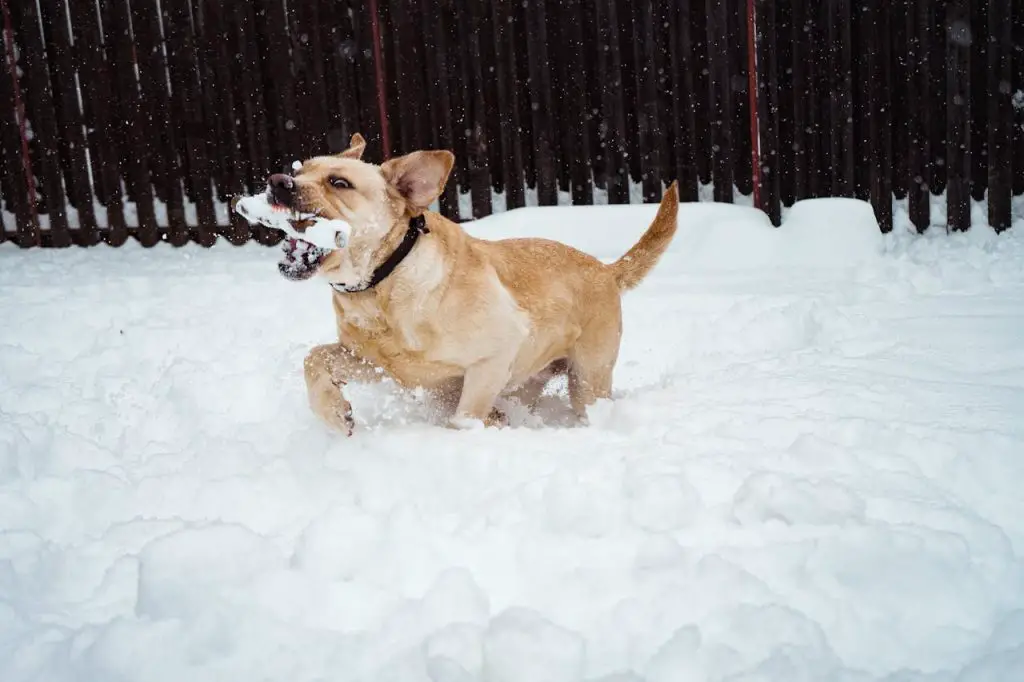
To identify these patterns, you’ll need to pay attention to your dog’s body language and stress signals. Look for changes in posture, facial expressions, and vocalizations.
For example, if your dog raises their hackles, growls, or shows their teeth when they see another dog, it’s likely a trigger for aggression.
As you observe your dog’s behavior, take note of the specific situations, people, or objects that seem to trigger aggressive responses.
Are they reacting to loud noises, new environments, or certain individuals?
By recognizing these trigger patterns, you’ll be better equipped to develop a training plan that addresses the underlying causes of aggression.
Keep in mind that every dog is unique, and it may take time and patience to identify the specific triggers that contribute to their aggressive behavior.
Stay calm, consistent, and observant, and you’ll be well on your way to understanding your dog’s behavior and developing a plan to address it.
Managing Environmental Factors

By understanding your dog’s trigger patterns, you can now take steps to manage the environmental factors that contribute to their aggression, starting with identifying and mitigating the specific stimuli that set them off.
This includes managing their surroundings to minimize exposure to triggers.
| Trigger | Mitigation Strategy | Benefits |
|---|---|---|
| Strangers | Gradual exposure through controlled socialization opportunities | Reduced fear and aggression towards strangers |
| Loud noises | Desensitization through gradual exposure to low-level noise | Reduced stress and anxiety in noisy environments |
| Other animals | Environmental enrichment, such as separating animals and providing separate spaces | Reduced territorialism and competition |
| High-energy environments | Providing regular exercise and playtime to reduce stress and anxiety | Reduced agitation and aggression in high-energy environments |
Establish Clear Communication
To establish clear communication with your dog, you need to develop a consistent vocabulary of commands and hand signals that your dog can understand and respond to.
This means choosing specific words and gestures for basic commands like ‘sit,’ ‘stay,’ and ‘come,’ and using them consistently in various situations.
Consistency is key to avoiding confusion and ensuring your dog responds promptly.
In addition to verbal commands, you should also be aware of your body language and the communication signals you’re sending your dog. Your posture, facial expressions, and eye contact all convey messages to your dog.
For example, direct eye contact can be perceived as aggressive or confrontational, while a relaxed, open posture can help your dog feel more at ease.
Set Boundaries and Rules
Establishing clear boundaries and rules is essential for teaching your dog what behavior is acceptable and what isn’t, helping you maintain order and stability in your home.
By setting boundaries and rules, you’re creating a clear understanding of what’s expected of your dog, which helps to prevent confusion and anxiety.
| Boundary or Rule | Why It’s Important |
|---|---|
| Not allowing your dog on the furniture | Establishes respect for personal space and prevents resource guarding |
| Not feeding your dog table scraps | Prevents begging and reinforces healthy eating habits |
| Requiring a calm demeanor before interacting | Encourages self-control and reduces excitement-based aggression |
| Not allowing your dog to jump up on people | Teaches respect for personal space and prevents accidental knock-overs |
| Setting a consistent sleep schedule | Establishes a routine and helps regulate your dog’s emotions |
Consistently enforcing these boundaries and rules is vital for effective boundary reinforcement and rule consistency.
By doing so, you’ll help your dog develop self-control, respect for others, and a clear understanding of what’s expected of them, leading to a more harmonious and stable home environment.
Remember, consistency is key to successful boundary setting.
How To Train A Dog To Not Be Aggressive By Practing Reward-Based Training
Reward-based training is a highly effective method of teaching your dog new behaviors. The use of positive reinforcement, such as treats and praise, encourages desired actions and discourages undesired ones.
By focusing on what your dog is doing right, rather than what they’re doing wrong, you’ll create a more confident and well-behaved pet.
To implement reward-based training, you’ll need to establish clear reward systems that your dog can understand.
This means choosing specific treats, toys, or praise that your dog finds motivating, and using them consistently during training sessions.
During training sessions, be sure to reward your dog the moment they exhibit the desired behavior. This helps them associate the action with the reward and encourages them to repeat it.
As your dog becomes more proficient, you can gradually phase out the rewards, replacing them with praise and affection.
Desensitize Your Dog to Triggers

Now that you’ve established a solid foundation of reward-based training, it’s time to tackle one of the most challenging aspects of dog behavior:
managing reactions to triggers that can set off undesirable behaviors, such as loud noises, other animals, or strangers.
To desensitize your dog to these triggers, you’ll use socialization techniques and gradual exposure. Start by identifying your dog’s specific triggers and creating a plan to address them.
Begin by exposing your dog to the trigger at a safe distance or low level, while providing a constant stream of treats and praise.
Gradually increase the proximity or intensity of the trigger over time, always rewarding your dog for remaining calm.
For example, if your dog is afraid of loud noises, start by playing a recording of the noise at a low volume, then increase it over time. Remember to move at your dog’s pace and never push them beyond what they can handle.
Manage Aggressive Behavior Episodes
When your dog exhibits aggressive behavior, you’ll need to employ specific strategies to manage the episode and prevent harm.
To do this effectively, you must be able to remain calm under attack and identify the triggers that set your dog off, as these are essential steps in resolving the situation.
Remain Calm Under Attack
To effectively manage aggressive behavior episodes in your dog, it’s essential that you remain calm under attack, as your composure is key to de-escalating the situation and reestablishing control.
When your dog becomes aggressive, your instinct may be to panic or become defensive. However, this can escalate the situation and prolong the aggressive behavior.
Instead, take a few deep breaths, focusing on calm breathing to calm yourself. This will help slow down your heart rate and clear your mind, allowing you to respond more thoughtfully.
Maintain assertive body language, standing up straight and making direct eye contact with your dog. Avoid direct physical confrontation or punishment, as this can increase your dog’s stress levels and prolong the aggression.
By remaining calm and assertive, you can reestablish control and diffuse the situation. Remember, your goal is to de-escalate the aggression, not to punish or dominate your dog.
With practice and consistency, you can effectively manage your dog’s aggressive behavior episodes and strengthen your bond.
Identify Aggression Triggers
Identifying your dog’s aggression triggers is a crucial step in managing aggressive behavior episodes, as it enables you to anticipate and prevent situations that may lead to aggression.
By understanding what sets off your dog, you can develop effective strategies to address the root cause of the problem.
Start by paying attention to your dog’s body language cues, such as raised hackles, growling, or stiffening.
These signals can indicate that your dog is feeling uneasy or threatened.
Next, consider environmental stressors, like loud noises, changes in routine, or confrontations with other animals, that might contribute to your dog’s aggressive behavior.
Take note of the following common triggers:
- Resource guarding: Does your dog become defensive when approached while eating or possessing a favorite toy?
- Fear or anxiety: Does your dog exhibit fear-based behaviors, such as cowering or avoidance, in certain situations?
- Territorial protection: Does your dog become aggressive when defending its territory or home?
- Medical issues: Could your dog be experiencing pain or discomfort that’s causing irritability?
You can develop a plan to address these triggers and reduce aggressive behavior episodes once you’ve identified the specific causes of your dog’s aggression.
Use Positive Redirection
By employing positive redirection techniques, you can effectively manage aggressive behavior episodes in your dog, redirecting their attention away from triggers and towards more desirable behaviors.
When your dog exhibits aggressive behavior, such as growling or snapping, redirect their attention to a toy or a treat-filled Kong toy.
This simple redirection method helps calm your dog and refocus their energy on a more positive outlet.
To implement positive redirection, you’ll want to incorporate reward techniques that reinforce good behavior.
As soon as your dog redirects their attention away from the trigger, reward them with a treat, praise, or affection.
Consistency is key, so be sure to use the same redirection methods and rewards each time your dog exhibits aggressive behavior. By doing so, you’ll teach your dog to associate the reward with the desired behavior, making it easier to manage future episodes.
With patience, persistence, and positive reinforcement, you can help your dog overcome aggressive behavior and develop a more even-tempered personality.
Frequently Asked Questions on How To Train A Dog To Not Be Aggressive
You can try training your aggressive dog without professional help, but it’s essential you focus on positive reinforcement and behavior modification techniques to address underlying issues; however, seeking expert guidance is often the most effective approach.
Training a dog to curb aggression is like rebuilding a house – it takes time, effort, and a solid plan. You’ll need to identify your dog’s aggression triggers and apply tailored training techniques consistently, requiring patience and persistence.
You can considerably reduce your dog’s aggression through consistent behavior modification and identifying specific aggression triggers, but completely eliminating aggression is challenging; its success largely depends on individual circumstances and the effectiveness of your approach.
You’ll find certain breeds are more prone to aggression due to breed characteristics and historical uses. Research suggests aggression factors vary across breeds, so it’s essential to take into account individual temperaments rather than just breed alone.
You can help prevent aggressive behavior in puppies by starting socialization early and consistently using positive reinforcement training methods, which encourage good behavior and discourage bad habits from forming as they grow.
Conclusion
As you conclude your journey to curb canine aggression, you’ve empowered yourself with the knowledge to transform your dog’s demeanor.
By grasping the intricacies of aggression, pinpointing triggers, and employing strategic training techniques, you’ve mitigated hostility.
Reward-based training and desensitization have harmonized your dog’s interactions.
Effective management of untoward episodes has guaranteed safety.
Your dedication has yielded a more tranquil, well-adjusted companion, as your bond grows stronger through empathy and understanding.


